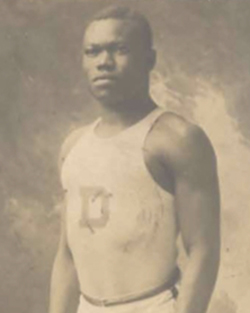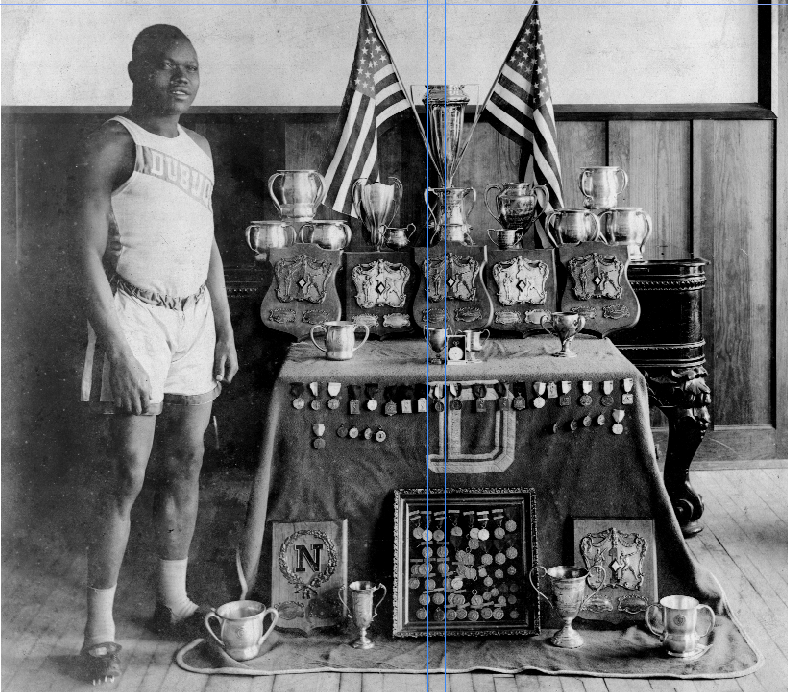Butler Announced as Inaugural Inductee into NSAF’s HOF
Feb 20, 2018


NEW YORK – The National Scholastic Athletics Foundation (NSAF), a non-profit organization created to support and promote high school-age track and field, announced the inaugural class of the new National High School Track and Field Hall of Fame.
Featuring the sport’s immortal legends like Solomon Butler, Jesse Owens and Jim Ryun, to all-time greats like Steve Prefontaine and Mary Decker Slaney, to current Olympic superstar Allyson Felix -- the inaugural class will feature 30 athletes, coaches and contributors spanning 11 decades of excellence in high school track and field.
“Our goal in creating a hall of fame for high school track and field is to honor the greatest athletes, coaches, innovators and contributors in high school track and field history,” said James Spier, Executive Director of the NSAF.
“The inaugural class of athletes, coaches, and contributors includes icons of the sport and each of these individuals has made a lasting impact on high school track and field. Generations of athletes have been inspired by and have benefited from their historic accomplishments.”
The 2018 class will be inducted during a gala awards dinner on Thursday, March 8, 2018, at the New York Athletic Club. The dinner will take place on the eve of the New Balance Nationals Indoor Championships at the Armory in New York City.
The Hall of Fame selection committee included noted track and field historians and statisticians Mark Bloom, Bob Jarvis, Dave Johnson, Mike Kennedy, Joe Lanzalotto, Marjorie Larney, Walt Murphy, Jack Pfeifer, Jack Shepard, Jim Spier, and Tracy Sundlun.
The Hall will honor three categories of inductees:
Athletes: Competitors who have demonstrated exemplary athletic performance while in high school.
Coaches: Leaders who have created excellence at the program level, achieving extraordinary results year after year.
Contributors: Innovators and game changers. These may include administrators or media members who have elevated high school-age track and field through innovative work and tireless dedication.
The following is the complete list of inductees, including their high school, hometown and year of graduation:
Ted Meredith - Mercersburg Academy, Mercersburg, PA, 1912
Solomon Butler - Rock Island HS, Rock Island, IL, 1915
Lee Barnes - Hollywood HS, Los Angeles, CA, 1924
Frank Wykoff - Glendale HS, Glendale, CA, 1928
Betty Robinson - Thornton Township HS, Harvey, IL, 1929
Cornelius Johnson - Los Angeles HS, Los Angeles, CA, 1933
Jesse Owens - East Tech HS, Cleveland, OH, 1933
Helen Stephens - Fulton HS, Fulton, MO, 1935
Eddie Morris - Huntington Beach HS, CA, 1940
Alice Coachman - Tuskegee Prep School, Tuskegee, AL, 1942
Bob Mathias - Tulare HS, Tulare, CA, 1948
Milt Campbell - Plainfield HS, Plainfield, NJ, 1953
Willye White - Broad Street HS, Shelby, MS, 1957
Dallas Long - North Phoenix HS, Phoenix, AZ, 1958
Gerry Lindgren - Rogers HS, Spokane, WA, 1964
Jim Ryun - East HS, Wichita, KS, 1965
Steve Prefontaine - Marshfeld HS, Coos Bay, OR, 1969
Lynn Bjorklund - Los Alamos HS, Los Alamos, NM, 1975
Mary Decker - Orange HS, Orange, CA, 1976
Kathy McMillan - Hoke County HS, Raeford, NC, 1976
Chandra Cheeseborough - Ribault HS, Jacksonville, FL, 1977
Renaldo Nehemiah - Scotch Plains HS, Scotch Plains, NJ, 1977
Michael Carter - Jefferson HS, Dallas, TX, 1979
Kim Gallagher - Upper Dublin HS, Fort Washington, PA, 1982
Alan Webb - South Lakes HS, Reston, VA, 2001
Allyson Felix - Los Angeles Baptist HS, North Hills, CA, 2003
Coaches and Contributors:
John Dye - Founder, Dyestat.Com
Ed Grant - Journalist
Joe Newton - York High School, Elmhurst, Il
Don Norford - Long Beach Poly, Long Beach, CA
Butler along with his older brother Benjamin followed his high school coach to Rock Island High School in Rock Island, Illinois, for his senior season in 1914. Facing 300 of the best track stars of the Midwest in Chicago, he competed in the regional interscholastic meet held at Northwestern University. He placed in the 60-yard dash and hurdles, the 440 yard dash, and also in the broad jump. He broke one meet record, tied a world record, and won fourth place overall, competing against entire track teams.
Butler earned 12 varsity letters competing in football, basketball, baseball and track and field at the University of Dubuque from 1915 to 1919. According to Arthur Ashe Jr.'s book ‘Hard Road to Glory, A History of the African-American Athlete’, Butler was the first African American to quarterback a team for all four years of college. In Butler's day, the track and field of activity was restricted. There was no national collegiate meet and very little indoor competition. Even the Drake Relays, then in their formative years, provided no such event as the broad jump. Butler went to the Penn Relays for that competition and twice won the championship. In 1919, to illustrate, Butler won both the 100-yard dash and broad jump at the Penn Relays. Entering military service as a soldier in World War I as he represented the U.S. Army in the Inter-Allied Games in Paris, where he won the long jump. He was knighted by the King of Montenegro, who made Butler a Knight of the Third Order of Danilo. With the Olympic Games scheduled for renewal in 1920 after the wartime interruption in 1916, Butler was rated as a heavy favorite for the championship. His winning jump at Paris, 24 feet 9.5 inches (7.557m), was two inches from the Olympic record and was considered a strong possibility for a new Olympic record. Butler went to Antwerp for the 1920 Olympics, but misfortune nailed him quickly. On his very first jump in the Olympic preliminaries he pulled a tendon and was forced to withdraw. The injury-hampered effort was a shade under 21-8. He won the U.S. National Amateur Athletic Union championship that same year by jumping 24 feet 8 inches (7.52 m).
He signed on with the NFL in 1923 with the Rock Island Independents, which local accounts raved about his first appearance in the victory over the Chicago Bears. His contract from Rock Island was sold to the Hammond Pros in November 1923 for the remainder of the season for $10,000. In 1925, Butler played for the Kansas City Monarchs of the Negro Leagues briefly, going 0-3. Later, returning to football, Butler played alongside Jim Thorpe of the Canton Bulldogs where he was named starting quarterback in 1926. In 1926, the New York Giants refused to let its all-white team on the field in front of the largest crowd ever (40,000) to watch an NFL game until Canton withdraw Butler as starting quarterback.
In 1927, Butler returned to Chicago and married (Berenice-a native Kansan). Butler moved back to the Midwest and went on to work with the youth in the Negro districts as recreation director of Chicago's Washington Park. He worked part-time as a probationary officer, and became sports editor for the Chicago Bee and The Defender newspapers in Chicago. He was active in the Chicago Blackhawk alternative professional football team and began becoming a well known personality after appearing in movies and press regularly. He wife died before Solomon and Berenice would have any children. He would spend his time promoting and coaching youth in city parks activities within the Chicago area.
While in California playing for the Chicago All-Stars basketball team which he founded, he would stay in the state. Butler used his earnings to re-open Jack’s Café, previously owned by Jack Johnson, former heavyweight boxing champion in 1932. He was named to a key role in a film by Russ Sanders in 1935 being filmed in Hollywood, Calif. after playing minor parts in a few films prior. He was signed by Oscar Devereaux Mischaux, and independent producer of more than 44 films for Lincoln Motion Picture Company. He and his brother Ben, sold cars, self-published a book on track and field, shined shoes, and did anything they could to raise money. In his later years after prohibition, Butler owned nightclubs in Chicago, set up his own talent agency and for a brief period was in the record business representing Paul Robeson, an American singer and actor who was a political activist for the Civil Rights Movement.
He died on December 1, 1954, in Paddy’s Liquors, a Chicago tavern where he was employed for seven years. Butler met his death by a man named Jimmie Hill, who reportedly had been annoying two female patrons. Butler ejected Hill, who came back with a gun and shot the former star in the hip and chest. Butler died of his injuries at Chicago's Provident hospital. He is buried next to his sister, Josephine Butler, at Maple Grove Cemetery in Wichita, Kansas.
For more information on the High School Track and Field Hall of Fame or to view detailed biographies of the inaugural induction class, visit nationalhighschooltrackandfieldhof.org
# # #
For additional information, please contact Paul Misner, director of sports information, at 563.589.3168.





